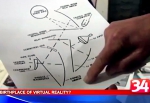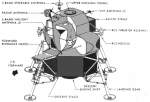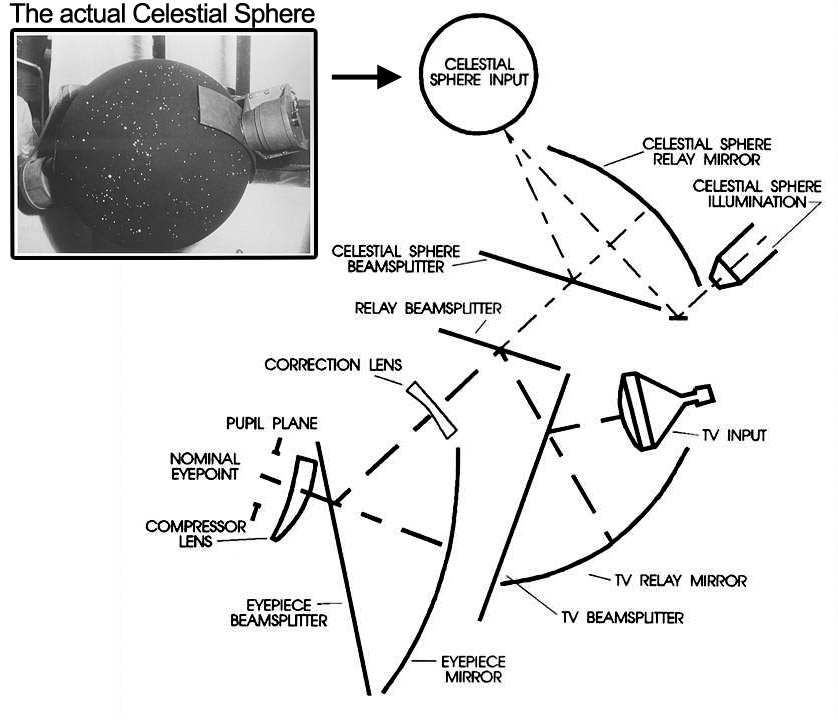Al’s First “Space Walk Experience” — in the News
 Al Nagler’s posting last week (Winter Star Party 2017: in the Eye of “Kermitis”) described his experience designing the optical system for the visual infinity display simulator used by the Apollo astronauts to land the “LEM” on the moon. Through a long-term loan from the Smithsonian, the Tech Works! technology museum in Binghamton, NY, has obtained parts of the LEM simulator and asked Al to consult on its restoration.
Al Nagler’s posting last week (Winter Star Party 2017: in the Eye of “Kermitis”) described his experience designing the optical system for the visual infinity display simulator used by the Apollo astronauts to land the “LEM” on the moon. Through a long-term loan from the Smithsonian, the Tech Works! technology museum in Binghamton, NY, has obtained parts of the LEM simulator and asked Al to consult on its restoration.

Behind the scenes, Al has gathered together help from some ex-Farrand engineers who worked with him on the project and remain close friends to this day. While the Tech Works! team has a lot of work still ahead of them, some significant progress has been made in getting this 50-year-old piece of technology working and ready for future public demonstration!
Al’s recent visit for a work session with the Tech Works! staff coincided with the “Roots of Simulation Reception.” NewsChannel 34 in Binghamton was there for the story and has posted a video report “Is Binghamton really the birthplace of Virtual Reality?” from the exhibit. A vital piece of the simulator shown in the video is a “star ball” with a representation of the sky. This “Celestial Sphere” was positioned and rotated to accurately reflect the sky’s motion during a lunar mission. The optical system which imaged the sphere and lunar surface, combined those images, and then brought them into the LEM’s “window” for the astronauts to view was designed by Al Nagler while he was with Farrand Optical — Farrand was a subcontractor to the Link company of Binghamton, NY that put the simulator together.
The Celestial Sphere was created by embedding 1,000 ball bearings on a black sphere. Each bearing was sized to match the magnitude of the actual star — Al even gold-plated some of the ball bearing to match the hue of real stars. When completed, the 110° field of view through the simulated LEM window left an impression on Al. Years later, this view inspired him to design wide-field “spacewalk” eyepieces for amateur astronomers.

The video report begins with airplane simulators built by the Link company and proceeds to the lunar lander simulator in the later half.
Video Report Highlights
0:00: Report introduction and airplane simulators
1:38: Segment on lunar module simulator begins
1:53: First view of the Celestial Sphere and relay mirror below it (see diag. above)
2:01: Reporter with Celestial Sphere (includes close-up)
2:16: Photo of the whole simulator room in operation at NASA in Houston, TX
2:38: Another view of the Celestial Sphere (rotating way to fast!)
2:51: Apollo Engineer John Lash comments on Al’s “star ball”
3:25: Al Nagler standing in center-background of frame, near — what else — a telescope! Judi Nagler is sitting to the right.
3:22: Final view of the Celestial Sphere
Stay tuned to the Tele Vue blog for progress updates on the LEM simulator restoration by Tech Works!. Hopefully one day we will all be able to visit Binghamton, NY, and get a look at the actual view that inspired Al in the late 1960s!
More Info
-Read The Simulators from David Levy’s article on Al
-Find out more about Tech Works!
Did you observe, sketch, or image with Tele Vue gear? We’ll like your social media post on that if you tag it #televue and the gear used. Example:
#televue #tv85 #ethos #jupiter
Do you want your Tele Vue images re-posted on Tele Vue Optics’ Social Media accounts? Use this hashtag for consideration:


